Spot a Ghost Sign for NYC's Lost Automat
There are no more Horn & Hardarts in NYC, but remnants of them still exist!


A controversial underground project is nearing completion in Brooklyn, but fierce opposition from local residents and elected officials, now including Mayor de Blasio, may hinder its progress. Officially named The Metropolitan Natural Gas Reliability Project, but more commonly known as the North Brooklyn Pipeline, the project’s goal as stated by National Grid is to “improve Brooklyn’s natural gas system by increasing the system’s safety, reliability, and operational flexibility.” Those who oppose the pipeline, however, fear it will bring increased health and environmental risks to already disenfranchised neighborhoods. Mayor de Blasio stated last week that he opposes the pipeline “because we cannot justify the environmental impacts on the largely Black and Brown residents of Brooklyn associated with an unnecessary pipeline expansion.” The fight against the North Brooklyn Pipeline is one of many New Yorkers have fought, and will continue to fight, as climate change increasingly affects our everyday lives.
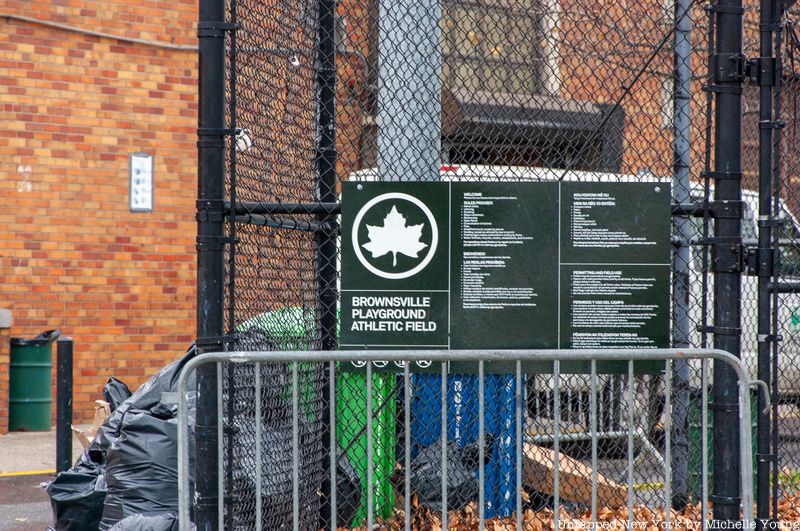
The pipeline begins across from the Brownsville Playground Athletic Field and Recreational Center
The North Brooklyn Pipeline is comprised of nearly seven miles of new pipe that runs through eastern and northern Brooklyn, weaving under the streets of neighborhoods that include Brownsville, Bedford-Stuyvesant, Bushwick, and East Williamsburg, ultimately ending in Greenpoint. Fracked gas from Pennsylvania will flow through the pipeline to National Grid’s depot on Maspeth Avenue along Newtown Creek.
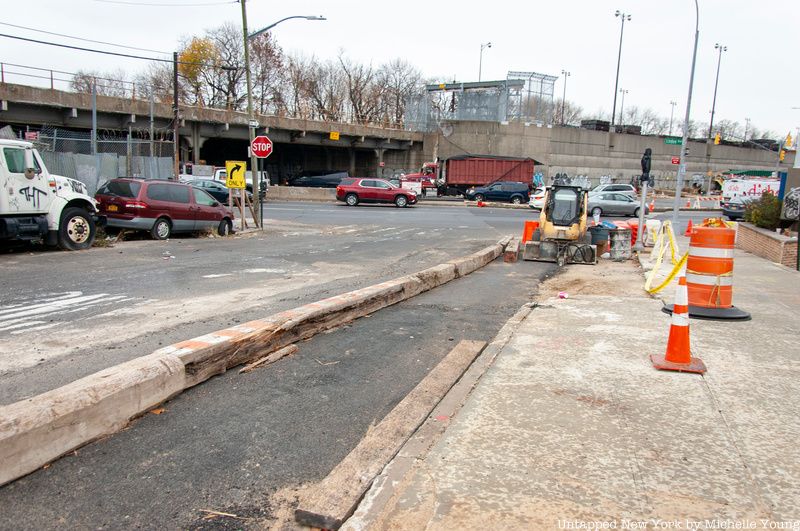
Repaired road under which the new pipeline flows
Almost six miles of pipeline have already been completed in the first four phases of construction. National Grid says the fifth phase of construction began in March 2020, but reports say it is currently on pause. On its website, National Grid lists “a safer, more reliable and resilient natural gas system” as one of the benefits of the project, along with “increased capacity in a gas constrained area…economic growth and local investment” and the acceleration of their Gas Main Replacement Program. The company promises to “maintain an open and proactive dialogue about the project with our neighbors and our partners in the local communities.”
Map by FracTracker Alliance and Sane Energy ProjectLocal residents and activists however have stated that they didn’t know about the pipeline’s true purpose until this year, and claim there has been no dialogue between National Grid and the affected communities. The opposition also refutes National Grid’s claims that the pipeline will have a positive impact on the communities it runs through. No North Brooklyn Pipeline, a coalition of various local organizations including Sane Energy Project, Brownsville Residents Green Committee, and Newtown Creek Alliance, points out that the pipeline is a transmission pipeline that “will not service the affected community where the already trafficked main thoroughfares and already stressed trucking routes for local businesses will be dug up.” Instead, they see the pipeline as a project carried out simply “to charge us, the rate-payers, millions of dollars in rate hikes to fill their share-holders pockets.”
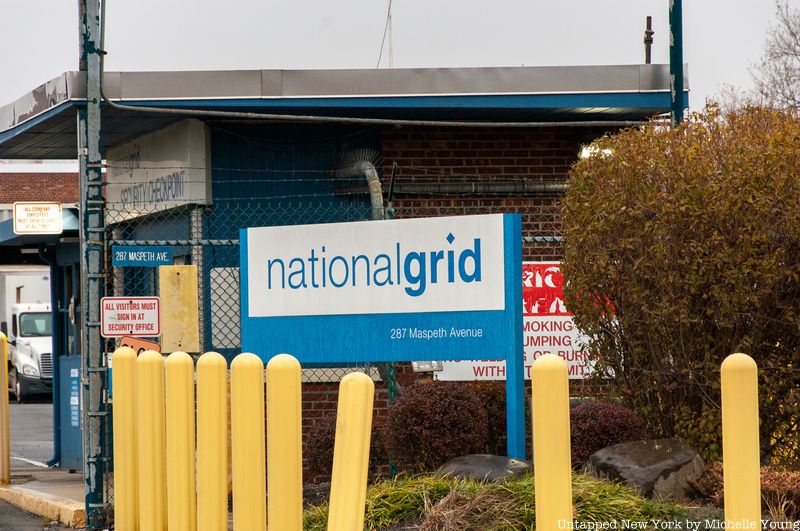
The National Grid Depot in Maspeth, Queens
Opposition efforts were bolstered last week with a statement from Mayor de Blasio and several elected officials. But while the statement from the Mayor is encouraging, opponents of the pipeline hope that his words will be followed up with action. Legally, National Grid has the right of way to build the pipeline. Construction is currently paused on the expansion of a Liquefied Natural Gas (LNG) facility in Greenpoint, to allow for a review of gas system planning by the state. Opponents hope the mayor’s office will ultimately block permits for the next phases of construction. The mayor’s full statement reads:
“Climate change is an existential threat to our city and we must transition quickly to clean energy. Today, I am voicing my opposition to National Grid’s North Brooklyn Pipeline because we cannot justify the environmental impacts on the largely Black and Brown residents of Brooklyn associated with an unnecessary pipeline expansion. Racial and environmental justice go hand-in-hand, and National Grid has failed to clearly demonstrate that this pipeline is needed to keep New Yorkers warm and safe. I am calling on them to withdraw this project immediately.”
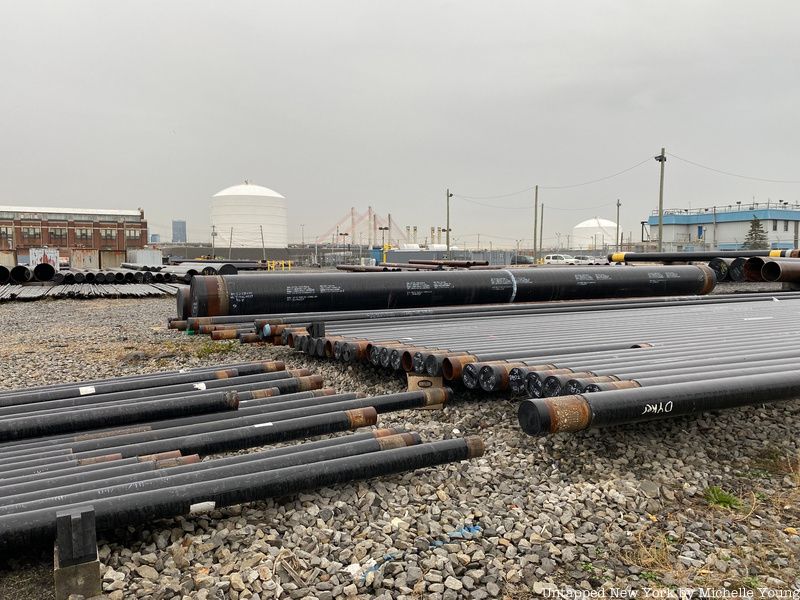
Pipes at the National Grid Depot
Many opponents see the installation of the pipeline as an act of environmental racism. Historically, low-income and communities of color have been disproportionately located in areas affected by extreme weather and pollution. “Restorative justice includes environmental justice for the Black and Brown communities. Going forward, we must foster bold solutions that would prevent projects like the Metropolitan Reliability Infrastructure (North Brooklyn Pipeline) from ever being constructed in this neighborhood. We need more investments in sustainable development, green spaces, clean energy and processes that reflect social inclusion and equity for our community. Brownsville is not a sacrifice zone,” says Gabriel Jamison, a founding member of the Brownsville Residents Green Committee. National Grid refutes the idea that the pipeline shows any racial predjudice, stating, “Our commitment and our obligation is to all of our customers, regardless of color.”
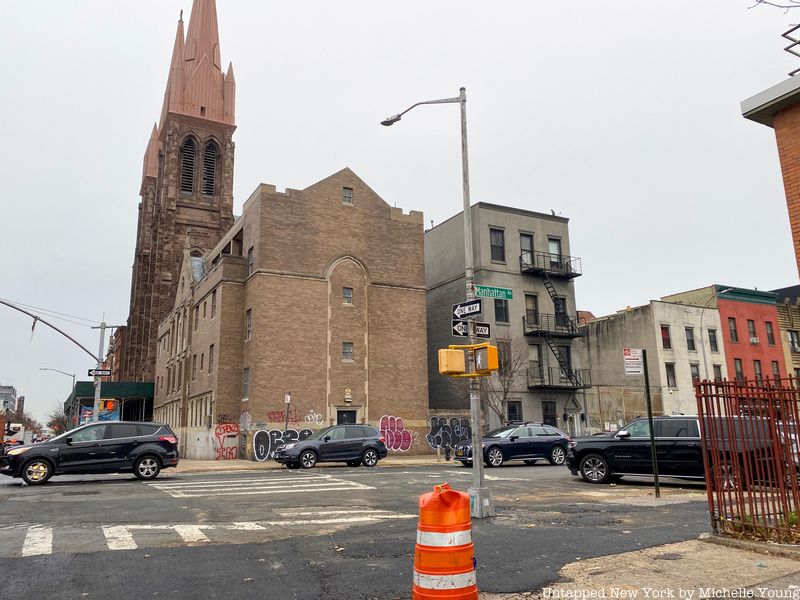
Recently completed portion of the pipeline on Manhattan Avenue and Montrose Avenue, next to Public School 250.
Health and environmental safety, the financial burden of paying for the pipeline and continued reliance on fossil fuels are chief among the concerns of the opposition. No North Brooklyn Pipeline refers to files from the United States Pipeline and Hazardous Safety Materials Administration (PHMSA) that report an average of 639 pipeline incidents per year resulting in 15 fatalities and a cost to the public nearly $600 million. Leaks and explosions are a real threat, especially to residents within the evacuation zone which stretches out about two blocks from either side of the pipeline. This evacuation zone includes parks, homes, playgrounds, community gardens, churches, schools, hospitals, local businesses, and historic structures like the Church of Saint Barbara, built-in 1909.
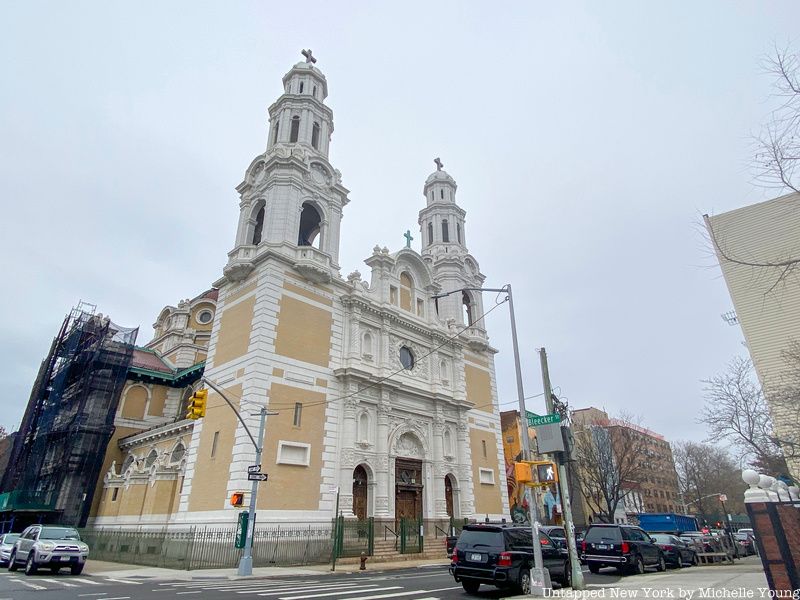
Church of St. Barbara lies along the evacuation zone in Bushwick/Ridgewood area
Residents of the affected areas and local officials argue that the pipeline goes against New York State’s ambitious climate change goals, as set forth in the 2019 Climate Leadership and Community Protection Act (Climate Act). This legislation was invoked by Governor Cuomo earlier this year when he declined proposals for The Williams Northeast Supply Enhancement pipeline. That line would have run for 37 miles from New Jersey across New York Harbor to connect to the pipeline system off Long Island. “People power stopped the Williams fracked gas pipeline. People power secured an executive order from the mayor of the biggest city in USA banning new fossil fuel infrastructure. Now the mayor is seeing that forward, clearly opposing the unnecessary and risky North Brooklyn pipeline. It’s time for National Grid to wake up and realize the future is in renewables, not yet more losing attempts at building new fracked gas infrastructure,” says Dominique Thomas, lead organizer, 350.org.
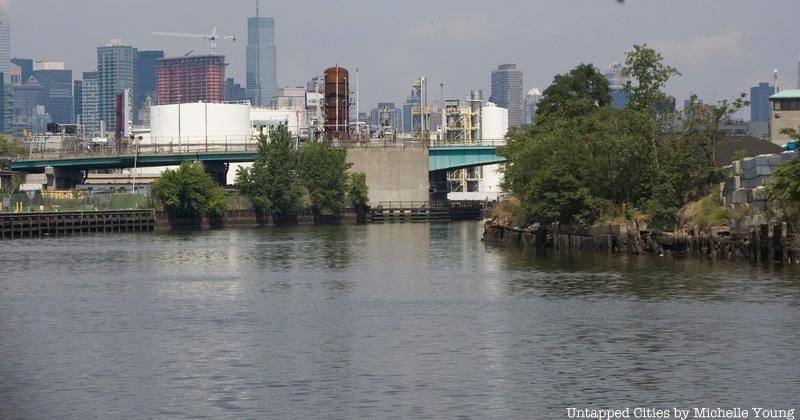
Newtown Creek
Environmental activism is not new to Brooklyn. The long list of advocacy groups that make up the No North Brooklyn Pipeline coalition, all have other local causes that they champion. Two of the most well-known environmental campaigns in Brooklyn center around the Gowanus Canal and Newtown Creek. The Gowanus Canal is a superfund site that runs through the neighborhoods of Park Slope, Cobble Hill, Carroll Gardens and Red Hook. Built in the 1800s, the canal endured more than a century of pollution, as gas plants, factories and chemical plants nearby dumped their waste into its waters. A slew of advocacy groups, including the Gowanus Canal Conservancy, Gowanus Dredgers, have worked hard in recent years to have surrounding communities engage with the waterfront. In November of 2020, cleanup of the canal officially started when dredging began.
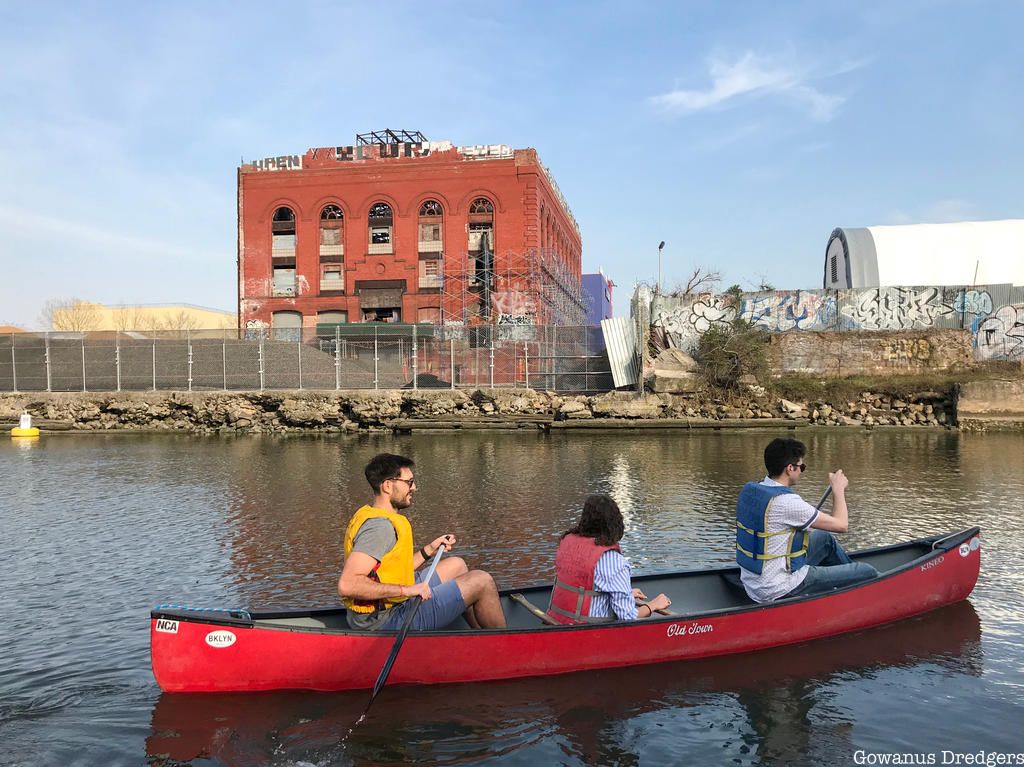
Kayakers on the Gowanus Canal with the Gowanus Dredgers
At the Newtown Creek Superfund site, groups including the Newtown Creek Alliance are working to “restore, reveal and revitalize” the creek that flows through parts of Brooklyn and Queens. Another exciting project in Brooklyn that promotes green space and the stewardship of the waterfront is the Brooklyn Waterfront Greenway Initiative, a 26-mile protected and landscaped route for pedestrians and cyclists that will connect Brooklyn’s iconic waterfront, parks and open space, commercial and cultural corridors, and new tech and innovation when it is completed in 2021.
The Mayor’s statement shows a powerful connection between passionate grassroots advocacy groups and the local government. Time will tell if that support will ultimately lead to the demise of the pipeline project, or if it will ultimately be completed regardless of efforts to stop it. Local residents and advocacy groups standing up to oppose the pipeline are part of a larger city-wide effort to create a greener and more sustainable New York City.
Next, check out Climate Clock in Union Square Counts Time Left for Climate Change Action and 10 Great Places to See on the Brooklyn Greenway Ride
Subscribe to our newsletter